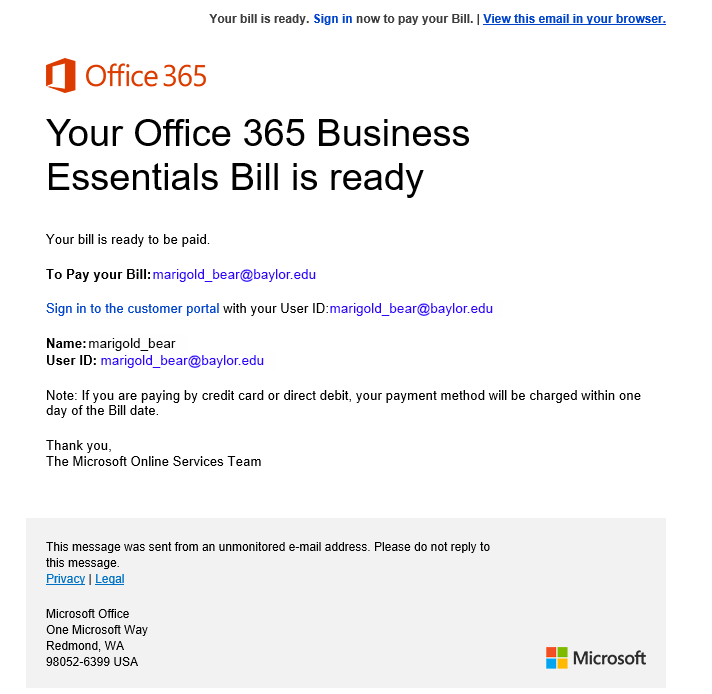On July 14, Baylor’s cybersecurity team detected a compromised email account, and by the following afternoon, several additional accounts were compromised—all victims of what appears to be a coordinated phishing campaign.


These phishing messages call the recipient to immediate action (verify!) to prevent their email or Microsoft account from being deactivated. In each case, the verification link leads to an online form that requests a username and password (and possibly additional information depending on the link). The initiators of the phishing attack then use the username and password to get through the first layer of security on the email system. Once the account holder blindly authorizes a two-factor authentication notification, the attacker uses the email account to distribute as many additional email messages as they can before the exploit is detected and the email account is disabled.
The telltale signs of a phish are as follows:
- No official university marks or template
- Message A has a serious grammatical error (“verify this request otherwise give us reason”) and Message B asks the recipient to “verify this request” and then capitalizes “Verify” mid sentence with a link.
- The link does not route to an official university account, but an unknown domain. Still, don’t click links in messages.
- Both messages emphasize the submission of a password. No institution will ask you to report your account password in an environment where you are not actually logging onto a system.

 Best practices when you receive any email, whether you know it is legit or not are:
Best practices when you receive any email, whether you know it is legit or not are:






